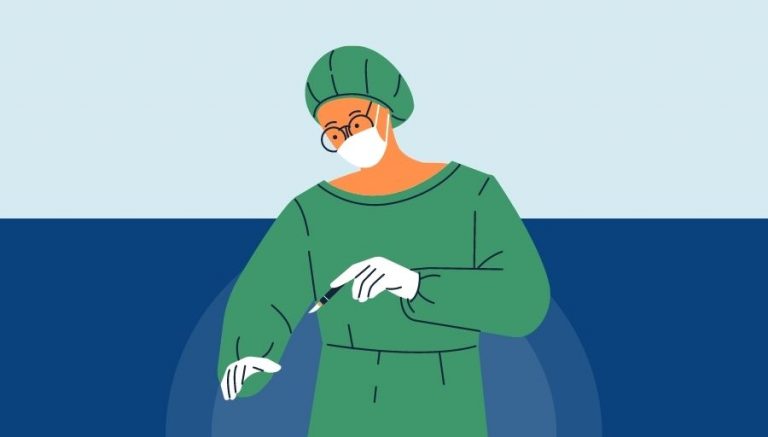How To Use CPT Code 64625
CPT 64625 is a code for radiofrequency ablation of nerves innervating the sacroiliac joint with image guidance. This article will cover the description, procedure, qualifying circumstances, when to use the code, documentation requirements, billing guidelines, historical information, similar codes, and examples of CPT 64625 procedures.
1. What is CPT 64625?
CPT 64625 is a medical billing code used to describe a specific procedure involving the destruction of nerves innervating the sacroiliac joint using radiofrequency ablation with image guidance. This procedure is typically performed to treat low back and sacroiliac pain that has not responded to other treatment methods.
2. 64625 CPT code description
The official description of CPT code 64625 is: “Radiofrequency ablation, nerves innervating the sacroiliac joint, with image guidance (ie, fluoroscopy or computed tomography)”.
3. Procedure
The CPT 64625 procedure involves the following steps:
- The patient is appropriately prepped and sedated.
- The provider inserts separate needle-like cannulas down to the dorsal branches of the nerves supplying the sacroiliac joint.
- The cannulas are positioned parallel to each other and 4 to 6 mm apart under fluoroscopic guidance.
- Using radio waves, the provider applies a temperature of 90 degrees centigrade for approximately 2 to 2-1/2 minutes, creating contiguous lesions (dead zone) in the selected nerves.
- The cannulas are removed, and adhesive bandages are applied to the insertion points.
4. Qualifying circumstances
Patients eligible to receive CPT code 64625 services are those experiencing low back and sacroiliac pain that has not responded to other treatment methods, such as physical therapy, medication, or other less invasive procedures. The provider must determine that radiofrequency ablation is the most appropriate treatment option for the patient’s specific condition and symptoms.
5. When to use CPT code 64625
It is appropriate to bill the 64625 CPT code when the provider performs radiofrequency ablation of nerves innervating the sacroiliac joint with image guidance to treat low back and sacroiliac pain that has not responded to other treatment methods. The provider must have determined that this procedure is the most suitable treatment option for the patient’s specific condition and symptoms.
6. Documentation requirements
To support a claim for CPT 64625, the following information must be documented:
- Patient’s medical history, including previous treatments and their outcomes
- Physical examination findings
- Diagnostic imaging results, such as X-rays, MRI, or CT scans
- Indication for the procedure, including the rationale for choosing radiofrequency ablation over other treatment options
- Details of the procedure, including the type of image guidance used (fluoroscopy or computed tomography)
- Post-procedure care instructions and follow-up plan
7. Billing guidelines
When billing for CPT code 64625, it is essential to follow specific guidelines and rules. Do not report CPT 64625 in conjunction with codes 64635, 77002, 77003, 77012, 95873, or 95874. For radiofrequency ablation with ultrasound, use code 76999. If the procedure is performed bilaterally, report CPT 64625 with modifier 50. Additionally, be sure to include all necessary documentation to support the claim, as outlined in the documentation requirements section.
8. Historical information
CPT 64625 was added to the Current Procedural Terminology system on January 1, 2020. There have been no updates to the code since its addition.
9. Similar codes to CPT 64625
There are several codes related to CPT 64625, which differentiate based on the specific procedure or technique used. Some of these codes include:
- CPT 64451: Injection of an anesthetic and/or steroid into the sacroiliac joint
- CPT 64600 to 64647: Destruction by a neurolytic agent of other nerves
- CPT 64635: Destruction of lumbar or sacral facet joint nerves with radiofrequency ablation
- CPT 77002: Fluoroscopic guidance for needle placement
- CPT 77012: Computed tomography guidance for needle placement
10. Examples
Here are ten detailed examples of CPT code 64625 procedures:
- A 45-year-old patient with chronic low back pain unresponsive to conservative treatments undergoes radiofrequency ablation of nerves innervating the sacroiliac joint with fluoroscopic guidance.
- A 60-year-old patient with sacroiliac joint pain and degenerative changes in the joint undergoes radiofrequency ablation with computed tomography guidance.
- A 35-year-old patient with a history of sacroiliac joint dysfunction and persistent pain undergoes bilateral radiofrequency ablation with fluoroscopic guidance (CPT 64625 with modifier 50).
- A 50-year-old patient with chronic low back pain and confirmed sacroiliac joint inflammation undergoes radiofrequency ablation with fluoroscopic guidance.
- A 40-year-old patient with a history of failed sacroiliac joint injections undergoes radiofrequency ablation with computed tomography guidance.
- A 55-year-old patient with sacroiliac joint pain and positive diagnostic imaging findings undergoes radiofrequency ablation with fluoroscopic guidance.
- A 65-year-old patient with chronic low back pain and sacroiliac joint degeneration undergoes radiofrequency ablation with computed tomography guidance.
- A 30-year-old patient with a history of sacroiliac joint dysfunction and persistent pain undergoes bilateral radiofrequency ablation with fluoroscopic guidance (CPT 64625 with modifier 50).
- A 70-year-old patient with sacroiliac joint pain and positive diagnostic imaging findings undergoes radiofrequency ablation with computed tomography guidance.
- A 48-year-old patient with chronic low back pain unresponsive to conservative treatments undergoes radiofrequency ablation of nerves innervating the sacroiliac joint with fluoroscopic guidance.





So, if I’m understanding this correctly, if SIJ ablation is performed using US guidance, then it would be billed as 64625 and 76999 (unspecified US) with the modifier 50?
Hi Jerm, sorry for the confusion. You can bill accordingly:
Yes, if the sacroiliac joint nerve ablation is done under US guidance, it is reported as CPT 64625 + CPT 76999, since there isn’t a specific CPT code for this case. But be aware that modifier 50 is only appended when the SIJ nerve ablation is done bilaterally. For example on nerves of both sacroiliac joints of the body. Modifier 50 has nothing to do with ultrasound guidance.